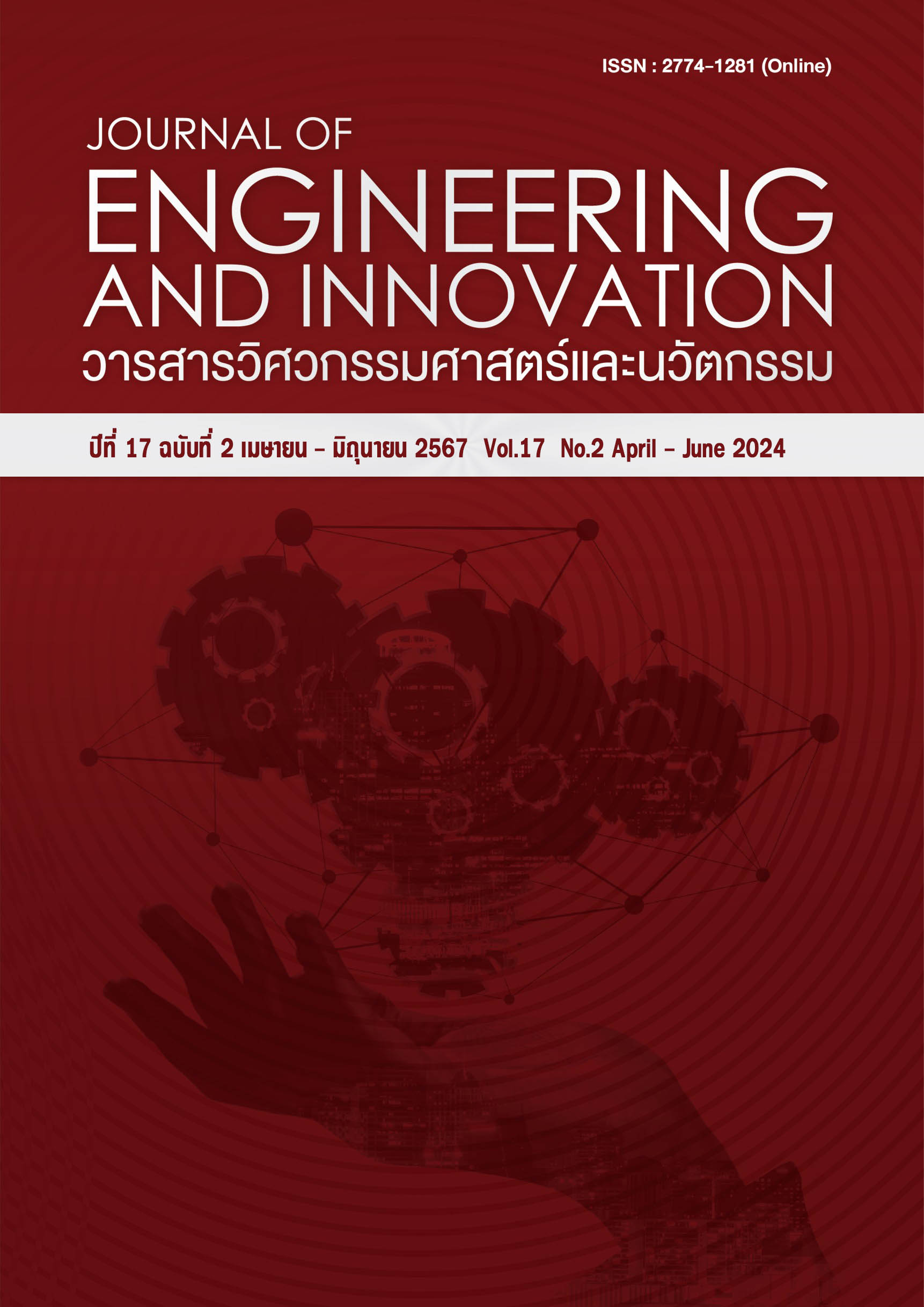The factor of construction labor management affected by the COVID-19 crisisin Thailand
Main Article Content
Abstract
During the COVID-19 epidemic, it greatly affected the construction industry, Especially the management of construction workers, because this virus is easily spread from person to person. Therefore, this study aims to study factors in labor management in construction projects affected by the spread of the COVID-19 virus and suggest solutions from literature reviews. From the collection of questionnaires with a reliability equal to 0.95 and from the quality inspection of the tools. According to the development, there are 10 suitable factors for collecting data and collecting questionnaires from a sample group of stakeholders in the construction industry in Khon Kaen Province, including construction contractors, consultants, and others. of 384 sets, received 443 sets of responses, and analyzed the factor groups by elemental analysis technique. From the results, the components of all 10 factors can be categorized by the factor analysis method into 4 groups as follows: namely health welfare, human and resource management, project management, and contract management. There are eigenvalues of 2.179, 1.212, 1.135 and 1.014 respectively.
Article Details
References
PMI. A Guide to the project management body of knowledge (PMBOK guide). Project Management Institute. 2013; 5.
Choi SD, Staley JA. Safety and health implications of COVID-19 on the United States construction industry. Industrial and Systems Engineering Review. 2021; 9(1): 56-67.
Chaisaard N, Ngowtanasuwan G, Doungpan S. A review of construction project management guidelines under the impact of COVID-19 epidemic dispersal: a case study of Thai construction projects. In SUT international virtual conference on science and technology. Nakhon-Ratchasima Thailand. 2022; 28.
Chigara B, Moyo T. COVID-19-related factors affecting construction labour productivity in Zimbabwe. Journal of Construction Project Management and Innovation. 2022; 12(1): 17-33.
Kadir MA, Lee WP, Jaafar MS, Sapuan SM, Ali AAA. Factors affecting construction labour productivity for Malaysian residential projects. Structural survey; 2005.
Nair G, Suresh M. Challenges faced by construction organizations during covid-19 era. Earth and Environmental Science. 2021; 796(1): 012004.
Lawrence Neuman W. Social research methods: qualitative and quantitative approaches; 2014.
Drost EA. Validity and reliability in social science research. Education Research and perspectives. 2011; 38(1): 105-123.
Cochran WG. Sampling techniques. John Wiley & Sons; 1977.
Chaitongrat T, Liwthaisong S, Aksorn P, Kusonkhum W, Leungbootnak N. Causal relationship model of problems in public sector procurement. Geomate Journal. 2021; 20(80): 52-58.
Pallant J. SPSS survival manual 3rd Edition. McGrath Hill. 2007; 15: 361-371.
Pranee. Finding quality of measurement and evaluation tools. Yala Rajabhat University; 2016.
Ostle B. Statistics in research 2nd Edition; 1963.
Thorndike RL. Factor analysis of social and abstract intelligence. Journal of educational psychology. 1936; 27(3): 231.
Burawat P. Will there really be I peding labour shortage? How to fix it. RMUTI JOURNAL Science and Technology. 2011; 4(2): 1-14.
Al Amri T., Marey-Perez M. Impact of Covid-19 on Oman's construction industry. Technium Soc. Sci. J. 2020; 9: 661.
Gashahun A. D. Assessmenton Impact of Covid-19 on Ethiopian ConstructionIndustry. International Journal of Engineering Science and Computing, 2020; 10(7): 26891-26894.
Tah JH, Carr V. A proposal for construction project risk assessment using fuzzy logic. Construction Management & Economics. 2000; 18(4): 491-500.
Mezher TM, Tawil W. Causes of delays in the construction industry in Lebanon. Engineering construction and architectural management. 1998; 5(3): 252-260.
Buakaeo S, Wattanapongmaytha P, Lakonchai N, Sanohphin C, Wongpinpech P, Chunin M. Achievement Motivation and Work Attitudes Predicting Work Efficiency of Information Technology Employees. Mathematical Statistician and Engineering Applications. 2022; 71(4): 6839-6850.
Koc K, Gurgun A. P. Ambiguity factors in construction contracts entailing conflicts. Engineering, Construction and Architectural Management, 2022; 29(5): 1946-1964
Shohet I. M., Wei H. H., Skibniewski M. J., Tak B., Revivi M. Integrated communication, control, and command of construction safety and quality. Journal of Construction Engineering and Management. 2019; 145(9): 04019051.
ดร. อาภาศิริ สุวรรณานนท์. นวัตกรรมข้อเสนอ เชิงนโยบาย “ปฏิรูประบบประกันสุขภาพแรงงานต่างด้าว” แนวคิดที่ท้าทายต่อการสร้างความมั่นคงด้าน สุขภาพของไทย. วารสารวิชาการบัณฑิตวิทยาลัยสวนดุสิต, 2015; 11(2), 149-157.
Tekin H. The impact of COVID-19 on construction labor productivity: the case of Turkey. Engineering, Construction and Architectural Management, 2022; 29(9): 3775-3806.
Majumder S., Biswas D. COVID-19 impacts construction industry: now, then and future. COVID-19: prediction, decision-making, and its impacts, 2021; 115-125.

